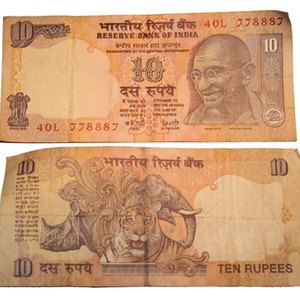
India strives for economic development, and it has done so since it gained its independence from Europe in 1947. Its commitment to growth became most pronounced when, in 1990, it chose to shift from a government-controlled banking system to a privately controlled banking system for the overall good of the economy. Now, retail banks in India work to further the same growth-oriented objectives.
Tailor Services to Indian Consumers

As of July 2010, India had more than one billion inhabitants. This means India has the second largest population in the entire world. About 82 percent of India's one-billion-plus inhabitants--about 948,000,000 people--practice Hinduism. Hinduism has an estimated 330,000 deities, and worshipers of these deities make donations to them. Retail banks meet India’s religious demands by providing their religious consumers with convenient ways to make online donations to their deity or deities of choice.
Stimulate the Indian Economy

While the Indian economy is steadily growing, poverty is still widespread. Since banks thrive in an economically healthy environment, they have a vested interest in promoting the health of the citizens in their market. One of the approaches that Indian banks use to stimulate the Indian economy includes providing access to financial services that could help citizens create jobs, access education and develop skills.
India has about 600,000 villages, many of which remain financially underserved. Providing financial services to these villages and educating their inhabitants about the proper use of those services furthers the objective of stimulating the Indian economy.
Serve the Growing Population of Wealthy Citizens

Every year since 1997, India's economy consistently grew by about seven percent. India's percentage of high-net-worth individuals is slated to grow at a rate that is among the highest of any other nation in the world. For banks, growing wealth means a growing need for car loans, mortgages, credit cards and wealth management services. Indian retail banks aim to meet these needs by providing a variety of innovative services.
Be a One-Stop Shop for Consumers
Retail banks in India recognize that if they want to remain competitive, they must reduce the need for clients to jump from bank to bank to have various needs met. They do this by expanding their number of locations and improving their technology. The aim is to become a one-stop shop so that they can provide their customer with the convenience that she is unable or unwilling to do without.
References
- Asian Info: India’s Religion and Philosophy
- Federal Deposit Insurance Corporation: Speeches & Testimony: Remarks by FDIC Chairman Sheila C Bair to the Reserve Bank of India; Mumbai India
- The World Bank. "GDP Growth (Annual %) - China, India." Accessed Sept. 10, 2020.
- Central Intelligence Agency (CIA). "Country Comparison: GDP (Purchasing Power Parity)." Accessed Sept. 10, 2020.
- The World Bank. "GDP Growth (Annual %) - India." Accessed Sept. 10, 2020.
- The World Bank. "India Overview." Accessed Sept. 10, 2020.
- The World Bank. "GDP (Current US$) - India." Accessed Aug. 25, 2020.
- The World Bank. "Agriculture, Forestry, and Fishing, Value Added (% of GDP) - India." Accessed Sept. 10, 2020.
- National Center for Atmospheric Research. "Monsoons Impact People." Accessed Sept. 10, 2020.
- Food and Agriculture Organization of the United Nations (FAO). "India at a Glance." Accessed Sept. 10, 2020.
- Food and Agriculture Organization of the United Nations (FAO). "STATUS, TRENDS AND DEMAND FOR FOREST PRODUCTS IN INDIA." Accessed October 23, 2020.
- Ministry of Fisheries, Animal Husbandry & Dairying, Government of India. "About Indian Fisheries." Accessed Sept. 10, 2020.
- Ministry of Coal, Government of India. "Production and Supplies." Accessed Sept. 10, 2020.
- Ministry of Petroleum and Natural Gas Economics & Statistics Division. "INDIAN PETROLEUM & NATURAL GAS STATISTICS 2018-19," Accessed October 23, 2020.
- Ministry of Commerce and Industry, Government of India. "Growth of Services Sector in India - Infographic." Accessed Sept. 10, 2020.
- Ministry of Tourism, Government of India. "India Tourism Statistics 2019," Page 1. Accessed Sept. 10, 2020.
- Ministry of Tourism, Government of India. "India Tourism Statistics 2019," Page 66. Accessed Sept. 10, 2020.
- World Travel and Tourism Council. "Economic Impact Reports," Download "India." Accessed Sept. 10, 2020.
- FICCI and Ernst & Young. "INDIA : INNOVATING TRANSFORMING AND DEFINING MEDICAL VALUE TRAVEL," Accessed October 23, 2020.
Writer Bio
Sophia Lopen began her work as a writer in 2010. Her background is in the sales, service and operations side of the banking industry. She holds a Juris Doctorate from John Marshall Law School and a Bachelor of Business Administration in management from Texas State University.

